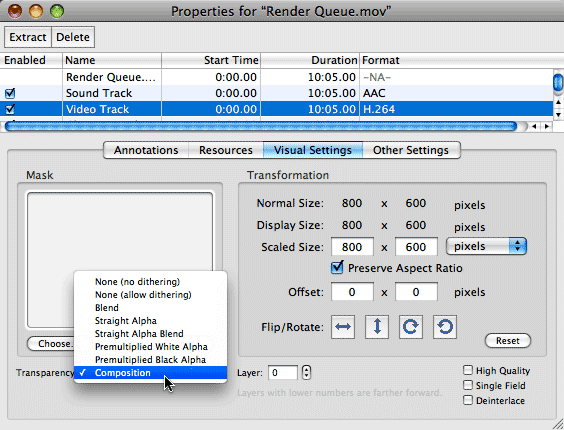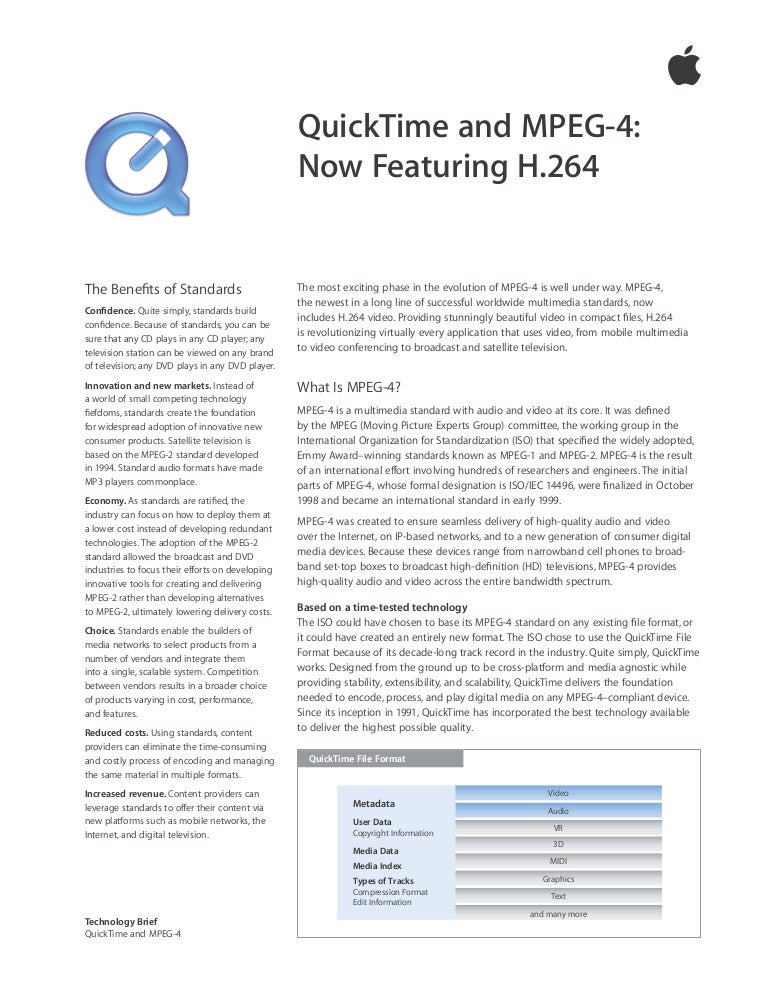
- #H 264 codec for quicktime mac how to
- #H 264 codec for quicktime mac mp4
- #H 264 codec for quicktime mac install
- #H 264 codec for quicktime mac update
- #H 264 codec for quicktime mac pro
(If there is a problem with the first download link, you can try the second download link.). It should have been removed a long time ago. Apple never did a good job supporting h.264 in a QT container, it was buggy and unreliable, and they are not doing any further development.
#H 264 codec for quicktime mac mp4
Note: H.264 files should be in an MP4 container.
#H 264 codec for quicktime mac pro
I would recommend downloading and installing the x264 codecs for Quicktime Pro for decent quality h264 renders. You would select Quicktime, then in the Quicktime settings choose the codec, etc. Hello! Whats up people! welcome back to another exciting after effect tutorial in this video I am going to show you “how to export h.264 video in after effects cc 2018”.
#H 264 codec for quicktime mac how to
How to Export H.264 Video in After Effects CC 2018 Missing H.264 Codec? P.s: Don’t forget to like, share and subscribing. V=wcu6qbwDzkg&list=PLE5IbnKHMwFaOHRl-G4GqQO-HeEC7sxbP.īe sure to leave a comment and to check out my channel! I have a lot more video’s. V=WycxFaJ_Ajs&list=PLE5IbnKHMwFZvXh1gk7SZXBPj4ab8FdJy. V=YZ17VToA_jM&list=PLE5IbnKHMwFZKcCyWdZoMEju7sutCc2wQ. UfsKDyi0k&list=PLE5IbnKHMwFbV6ZMSKmIg_UZ7QqI-SuW How to Render 360 in 3Ds MAX Tutorial Vray setting. ģds max Advance Exterior Rendering setting Tutorial: How to Create Bedroom in 3D max Tutorial and Interior lighting. Smooth House Animation After Effects Tutorial.Īfter effects 2 Minutes quick tips USING NULL OBJECT. How to Render Video with Transparent Background in After Effects Tutorial. Importing 3D models into Unreal Engine 4. If you are having trouble with this, then let me know and I will try to help you. Please leave a like and subscribe if this had helped you.

#H 264 codec for quicktime mac install
How to Install and Render H.264 video codec in After Effects CC 2015, 2016, 2017. If you follow these steps you will also know the best way how to render in After Effects CC mp4 which is also the same as how to export to mp4 in After Effects. Using Abobe Media Encoder, knowing how to export h.264 video in After Effects CC has never been easier. There is no h.264 in After Effects CC 2018 either but if you apply these same steps it works the same. I was actually able to figure out how to get h.264 in After Effects CC 2019 and this works for Windows and Mac users. I noticed myself when I first used this updated version of Abobe After Effects that h.264 was missing.

But if anyone knows any websites that accept mp4 but not mov I'd be happy to test an upload and see if it works.In this After Effects tutorial I show you how to access h.264 in After Effects CC 2019. mov, so I can't actually verify this since for all I know my tools might be ignoring the extension and autodetecting mov. Unfortunately every tool I have which takes. (ProRes files are enormous, BTW.)Ī lot of people report that simply renaming a "mov" file to "mp4" works when the data is h.264 such as in this case. It's similarly h.264 when you record from the built-in webcam in QuickTime using the default "high" quality, but switches to ProRes if you select "maximum" quality for recording.


Just tried making a screen recording with QuickTime on my Mac and investigating it with the "mediainfo" command-line tool (available on Homebrew).
#H 264 codec for quicktime mac update
UPDATE 2: So screen recordings don't use ProRes by default, they use AVC (but what profile?), so I'm unsure why so many other programs and websites reject those files because, theoretically, there should be no problem in processing them, unless the site was written by someone who doesn't understand how video files work. ProRes is very different to AVC, HEVC, etc, which explains why you need to transcode it to do anything useful with it. UPDATE: After some research, I think that macOS screen-recordings are made using Apple's ProRes video coding, and then saved inside a QuickTime (aka MPEG-4) Container. So for this conversation to continue, we need to know what codec/video-stream-format is actually being used (I don't have a Mac ready to experiment right now, sorry). Other people are reporting the same problem: the other media software can't read Apple's screen-recording files, so I'm assuming this actually means that Apple's screen-recordings are saved using a codec other than MPEG-4 AVC or HEVC, but still in an MPEG-4 container. and Apple has been using MPEG-4 AVC and HEVC for at least a decade now, so I don't understand what the OP is complaining about: QuickTime *.mov files are MPEG-4 container files, which usually contain MPEG-4 AVC or MPEG-4 HEVC streams. The *.mov file format is the same as MPEG-4's container format (in fact, MPEG-4's container is intentionally based on QuickTime's *.mov) and is even standardized as an ISO spec: "ISO/IEC base media file format": +


 0 kommentar(er)
0 kommentar(er)
